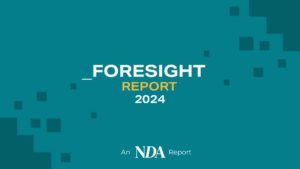McKinsey & Company has released its new report “Value creation in the metaverse,” which shows the metaverse may be too big to ignore. McKinsey’s preliminary forecast shows the metaverse has the potential to grow up to $5 trillion in value by 2030. It shows e-commerce as the largest economic force ($2.6 trillion), ahead of sectors such as virtual learning ($270 billion), advertising ($206 billion), and gaming ($125 billion).
As companies of all different shapes and sizes look to enter the metaverse, this extensive report provides a clear view of what the metaverse is and is not, what first movers are doing, what’s fueling the investment, and the potential for consumer and B2B companies.
The report builds on multiple proprietary insights and analysis, including a survey of more than 3,400 consumers and executives on adoption of the metaverse, its potential, and its likely impact on behaviour. The researchers also interviewed metaverse builders and industry experts.
“The metaverse represents a strategic inflection point for companies, and it presents a significant opportunity to influence the way we live, connect, learn, innovate, and collaborate,” said Eric Hazan, senior partner, McKinsey & Company.
What’s fueling the metaverse investment
Already this year, companies, venture capital, and private equity firms have invested more than $120 billion in the metaverse—more than double the $57 billion invested in all of last year.
Multiple factors are driving this investor enthusiasm:
1- ongoing technological advances across the infrastructure required to power the metaverse
2 – demographic tailwinds
3 – increasingly consumer-led brand marketing and engagement
4 – increasing marketplace readiness as users explore today’s version of the metaverse, which is largely driven by gaming while applications emerge in socializing, fitness, commerce, virtual learning, and other uses
Already, more than three billion gamers worldwide have access to different versions of the metaverse.
“While the idea of connecting virtually has been decades in the making, it is now increasingly real, meaning real people are using it and spending real money and companies are betting big,” said Lareina Yee, senior partner, McKinsey & Company. “Yet this booming interest has made it difficult to separate hype from reality. It’s worth remembering that while the bust of the first dot-com boom resulted in the disappearance of scores of companies, the internet itself went from strength to strength, giving rise to new entrants.”
Consumers are already engaging in the metaverse
Consumers are already there. McKinsey’s research shows consumers are excited about transitioning life into the metaverse, with almost six in ten (59%) consumers preferring at least one metaverse experience over its physical alternative.
Among those consumers, certain types of activities stand out for being most preferred in the immersive world:
1- shopping—purchasing physical or virtual goods (79%)
2 – attending virtual social events or playing social games (78%)
3 – exercising using virtual reality (76%)
Senior leaders believe the metaverse will have a significant impact on their industry
Business leaders see the metaverse’s potential to drive impact and margin growth. Ninety-five percent of leaders say they expect the metaverse to have a positive impact on their industry within five to ten years, with 31 percent saying the metaverse will fundamentally change the way their industry operates. More significantly, a quarter of leaders expect the metaverse technology to drive more than 15 percent of their organization’s total margin growth in the next five years.
“The metaverse has put us at the cusp of the next wave of digital disruption,” said Tarek Elmasry, senior partner, McKinsey & Company. “It’s transformative. It will likely have a major impact on our commercial and personal lives, which is why businesses, policy makers, consumers, and citizens may want to explore and understand as much as they can about this phenomenon, the technology that will underpin it, and the ramifications it could have for our economies and wider society.”
For more insights and to read the full report, please click here









